Courthouse Clears Hurdle
A proposed new federal courthouse for Harrisburg took a significant step forward last month, as a Congressional panel approved funding for the project.
U.S. Rep. Lou Barletta said the House Infrastructure and Transportation Committee approved full funding for the $194.4 million courthouse at N. 6th and Reily streets. Congress has already appropriated about $55 million for land acquisition, feasibility studies and design.
“This has been a long time coming, with various baby steps along the way, but now the Harrisburg courthouse will finally become a reality,” Barletta said in a statement.
The full House and Senate still must pass a final bill appropriating the money, but Barletta spokesman Tim Murtaugh called House committee approval the greatest obstacle.
“This was the major hurdle,” he said.
After many years of searching, the federal government selected the Midtown site in 2010, acquiring the land and razing a few old buildings. However, the site has sat empty since, as the project has awaited funds for construction.
Barletta said that he had re-considered the scope of the project, perhaps in favor of an annex to the existing federal courthouse downtown. However, he finally agreed that a new facility was needed.
The 243,000-square-foot building will contain as many as eight courtrooms, including three for district judges, two for senior district judges, two for magistrate judges and one for bankruptcy judges. The plan also calls for about 43 parking spaces.
Assuming that Congress appropriates the money, several years will likely pass before construction begins. Earlier this year, the U.S. General Services Administration released a priority list for new courthouses and annexes around the country, putting eight other projects ahead of Harrisburg’s.
Sinkhole Money Secured
Harrisburg last month secured nearly $1.7 million in federal funds to help remediate a sinkhole-ravaged stretch along the 1400-block of S. 14th Street.
In its award letter, the Federal Emergency Management Agency specified that
Harrisburg must provide $550,000 in matching funds, which may come from other grants the city hopes to receive for the project.
The city envisions acquiring and tearing down 52 homes along the block. It then would fill in the sinkhole-prone area with backfill and soil, before turning it into permanent green space.
This was the second time that the city attempted to secure FEMA funds. Last year, the agency turned down the city’s request, directing money for sinkhole remediation to Palmyra. Harrisburg then asked FEMA to reconsider its project, which resulted in the award.
Giant sinkholes began opening up on the block in March 2014, making many of the houses uninhabitable and the remainder virtually worthless.
Council Weighs Market Contract
The Broad Street Market took a step towards a long-awaited restructuring last month, as City Council held a hearing that could lead Harrisburg’s historic market to become a nonprofit entity.
Most council members seemed to favor the proposal, which would permit a new nonprofit called the Broad Street Market Alliance, to enter into a lease agreement with the city, which owns the 150-year-old market. The lease would run for five years with an option for a 10-year extension.
Under the agreement, the city would rent the two market buildings for $1 a year to the nonprofit, which then would be responsible for maintenance and repairs. Under this structure, the market would be eligible to apply for numerous grants reserved for nonprofits and also could raise money, said market Manager Beth Taylor, who estimates the buildings have $1.5 to $2 million in deferred maintenance and capital improvement costs.
Currently, the market operates within a complex structure, in which the city owns the market, but the for-profit Broad Street Market Corp. manages it under the supervision of the Historic Harrisburg Association. The city also charges $1 per year in rent, but is obligated to pay for maintenance and improvements.
Under the restructuring, the alliance would have a 13-member board, and its efforts would be supplemented by the creation of a new support and fundraising group called Friends of the Broad Street Market.
At press time, council had not scheduled a final vote on the lease agreement.
Midtown Project Receives Funds
A key renovation project in Midtown Harrisburg is expected to move rapidly to completion, as the state announced last month that it will release funding to help finish the block-long historic rehabilitation at N. 3rd and Boas streets.
In a press conference, Gov. Tom Wolf announced that the developer, WCI Partners, will receive $3.5 million from the Redevelopment Assistance Capital Program, a state initiative that focuses on culturally and historically significant projects.
“We’re going to make sure that this project works, that courageous, hard-working people succeed,” said Wolf, who praised WCI for taking a risk to restore the long-vacant properties along the 900-block of N. 3rd Street.
The $8 million project consists of four buildings—the historic Harrisburg Moose Lodge Temple and three smaller townhouses, as well as a large parking lot.
WCI acquired the properties last year for $900,000 from Atlanta-based Mosaica Education, which had operated the Ron Brown Charter School there for five years. After its charter was not renewed, the school shut down in 2005, and the buildings have sat empty and increasingly dilapidated.
The 92-year-old, 38,000-square-foot former Moose Lodge opened last month as a fully renovated, mixed-use building consisting of 33 one-bedroom apartments and commercial space. The 6,500-square-foot ground floor is occupied by st@rtup Harrisburg, a city-based co-working space.
WCI Principal Alex Hartzler said that much of the RACP money will go towards finishing the project, especially the renovation of the three townhouses.
The back portions of the townhouses were chopped off years ago to expand the Ron Brown School’s parking lot and provide a play area. However, the long-empty buildings were not properly sealed, resulting in extensive water and infrastructure damage, Hartzler said.
More than 100 years ago, the townhouses were constructed with commercial space on the ground floors and apartments upstairs. WCI will return them to this mixed-use format, and TheBurg plans to occupy the ground floor space of two of the townhouses, which should be ready for occupancy early next year.
The state had not released RACP money since 2014. Several other Harrisburg-area groups, include Gamut Theatre Group and the Harrisburg City Islanders, have applied for funds. Wolf said funding for other projects would be announced soon.
Disclosure: Alex Hartzler is publisher of TheBurg.
Treasurer Criticizes Report
Harrisburg Treasurer Dan Miller last month gave a generally unfavorable assessment of a report that criticized the operations of the city treasurer’s office.
Before City Council, Miller said that the report, drafted by consultant Alvarez & Marsal, was correct in some of its conclusions, but incorrect in others. For instance, the report stated that the department lacked written procedures and policies, which, Miller said, was not true.
The report became controversial earlier this year when city Controller Charles DeBrunner made it public over the objections of Mayor Eric Papenfuse, who said its release was premature and unwise.
The city contracted with Alvarez & Marsal after former Treasurer John Campbell resigned following his arrest on theft charges not related to his city position. The report found no wrongdoing by Campbell as treasurer, but pointedly criticized how the office was run.
This was Miller’s first significant appearance before council since he was named treasurer in June to fill the unexpired term of former Treasurer Tyrell Spradley, who resigned the post.
“I have complete confidence in the city Treasury Department and operations,” Miller told City Council.
Home Sales Jump
Harrisburg-area home sales increased significantly in August, rising by 21 percent from the year-ago period.
Homes sales totaled 947 units compared to 783 units in August 2015, according to the Greater Harrisburg Association of Realtors.
The median price rose to $169,900 from $165,000 in the prior year, said GHAR.
In Dauphin County, 311 homes sold compared to 265 last August. In Cumberland County, sales totaled 336 units versus 268. Sales in Perry County increased to 38 units versus 27 in August 2015.
GHAR’s area covers all of Dauphin, Cumberland and Perry counties and parts of York, Lebanon and Juniata counties.
So Noted
Capital Joe Coffee has opened at 418 Forster St., Harrisburg, across the street from the state Capitol complex. Capital Joe serves Square One Coffee of Lancaster and pastries from Brew Crumberland’s Best of New Cumberland.
Impact Harrisburg last month awarded the city $250,000 in emergency funding to upgrade its IT infrastructure after city workers experienced system failures that prevented access to email and other shared files. The award should allow the city to migrate certain mission-critical functions to a cloud-based solution, thereby improving performance and reducing the risk of crashes.
Whitaker Center has announced the planned retirement of its long-time CEO and president, Dr. Michael Hanes. Hanes will retire at the end of next year, prompting the board to initiate a search for his replacement.
Changing Hands
Berryhill St., 2418 & 610 Fillmore St.: T. Le to D. Nguyen, $30,000
Benton St., 545: MBHH RE LLC to Triple Play Properties LLC, $30,000
Benton St., 601: M. Munro to S. Harrison, $102,000
Briggs St., 216: M. & P. Parsons to J. Vingsness & A. Posner, $205,000
Briggs St., 2024: S. Chapman to S. Maurer, $35,450
Brookwood St., 2213: PA Deals LLC to Mid Atlantic IRA & C. Hampton IRA, $50,000
Calder St., 268: K. Ciminello to B. Roller, $107,500
Chestnut St., 2048: S. Reyes to A. & R. Hart, $103,000
Chestnut St., 2215: J. & H. Kelly to J. & E. Colt, $179,900
Credit Union Place, 1: Pa. State Employees Finance Dept. to Commonwealth Charter Academy Charter School, $5,000,000
Derry St., 1316: Sandra Feigley Inc. c/o Thelma Johnston to S. Khan, $34,000
Derry St., 2035: S. Nagle to J. Guzman & M. Rodriguez, $89,900
Derry St., 2354: T. Pham to H. Pham & N. Le, $45,000
Emerald Ct., 2451: H. Conrad to J. & S. Theodorou, $82,000
Fillmore St., 610: T. Johnson to D. Nguyen, $30,000
Forster St., 1621: M&T Bank to PA Deals LLC, $47,000
Fulton St., 1738: PA Deals LLC to D. Reinhart, $124,900
Green St., 1623: B. Christine to S. Vemula & M. Chada, $115,000
Kensington St., 1952: J. & J. Belfonti to Tout USA LLC, $65,000
Lenox St., 1918: J. Zellers to A. Rosario & S. Castillo, $54,300
Lenox St., 1922: T. & J. Santiago to T. & B. Nguyen, $32,500
Lenox St., 1930: V. Bria to A. Perez, $62,500
Linden St., 109, 111, 113, 115, 117, 117½ 119, 119½ & 100, 112 N. 13th St.: Habitat for Humanity Greater Harrisburg Area to CPenn Patriot Properties Midtown LLC, $131,000
N. 2nd St., 1618: K. Robinson to D. Payne, $249,900
N. 2nd St., 2531: S. Mirza & F. Jabari to H. & S. Johnson, $157,500
N. 2nd St., 2539: D. Garber to E. & A. Stockstill, $165,000
N. 2nd St., 2812: M. Macholtz to T. Brinkley, $280,000
N. 2nd St., 3016: S. Trent to D. Marcheski & L. Boykin, $156,000
N. 3rd St., 1122: S. & G. Giambalvo to G. & K. Tennis, $197,500
N. 3rd St., 1935: T. Stutzman to Monte Design Studio LLC, $40,000
N. 3rd St., 3104: Secretary of Housing & Urban Development & ISN Corp. to M. Horgan & R. Kushner, $45,000
N. 4th St., 1627: GWD Capitol Heights LP to J. Parfitt, $103,000
N. 5th St., 2313: K. & D. Izer to BCR 2 Properties LLC, $30,000
N. 5th St., 2437: Willowscott Investments to K. Hurst & N. Howze, $68,900
N. 6th St., 1625: S. & C. Lane & New Heights South LLC to A. & A. Gee & PA Department of General Services, $42,000
N. 6th St., 1633: HarrisPenn Trust to PA Department of General Services, $554,500
N. 6th St., 2130: S&T Bank to N. Mitaka, $46,000
N. 13th St., 146: L. Ware Jr. to W. Banks, $80,000
N. Front St., 1525, Unit 606: A. Moscato to J. Scarnati, $117,900
N. Front St., 1711: A. Haroundzadeh & D. Dohner to Harrisburg Redevelopment Group LLC, $1,065,000
Penn St., 1602: P. Larsen to M. Dinicola, $159,900
Penn St., 1916: WCI Partners LP to D. O’Hagan, $161,000
River St., 122: A. Rhoads & D. & S. Shatto to J. & G. Souders, $57,500
Rudy Rd., 1952: S. Schmidt to W. Zhang, $50,000
Rudy Rd., 2256: W. Ryan to Z. Rothfus, $176,900
Seneca St., 641 & 645: D. & K. Howard to DAP 7 Curtin LP, $55,000
Showers St., 615: J. & D. Groff to E. Hobbs, $155,000
S. 13th St., 1400: J. & E. Cavitt to I. Medina & J. Culcay, $76,500
S. 20th St., 209: R. Doerfler & J. Moffitt to J. & B. Readinger, $48,300
S. 27th St., 710: D. & C. Howe to D. Barrick & A. Toci, $199,000
S. 28th St., 728: S. Oscilowski to M. Marcus, $84,000
State St., 1604: Mid Penn Bank to C. Valdivieso, $37,000
Swatara St., 1523: Tri County HDC Ltd. To J. Macias, $102,900
Swatara St., 2145: S. & E. Reeves to M. Thompson & J. Longe, $64,900
Whitehall St., 1939: R. Miller Sr. to R. Howard, $50,900
Author: Lawrance Binda
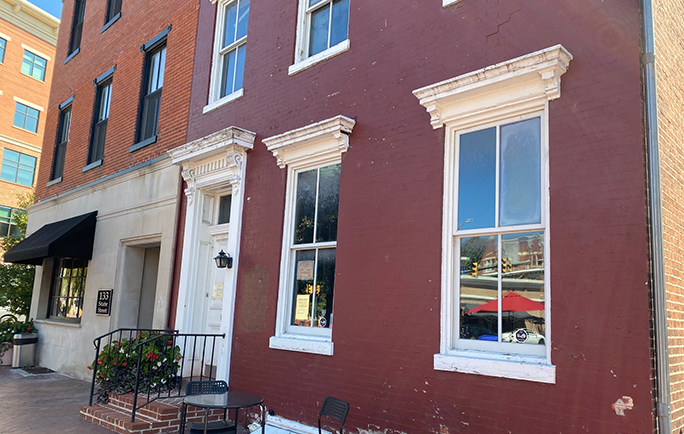


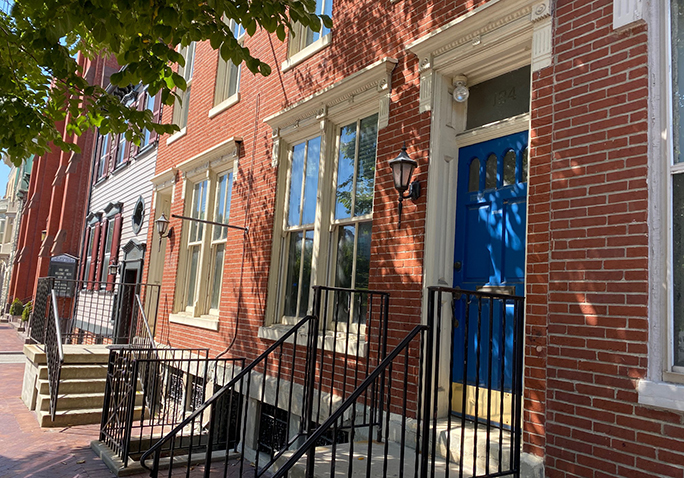
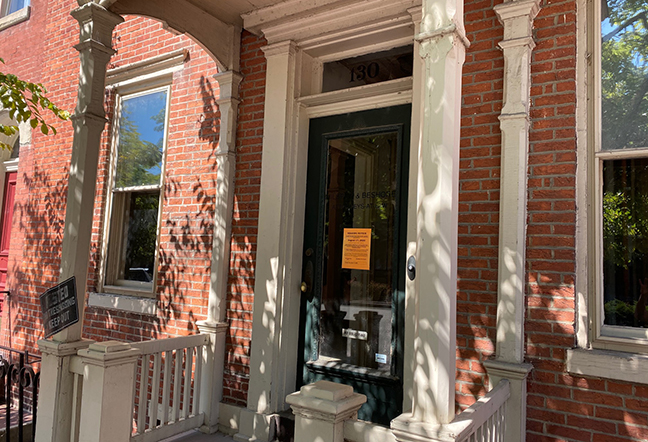
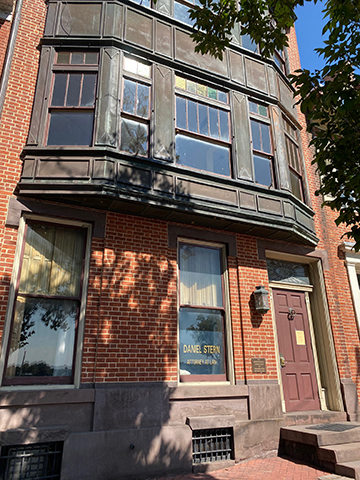
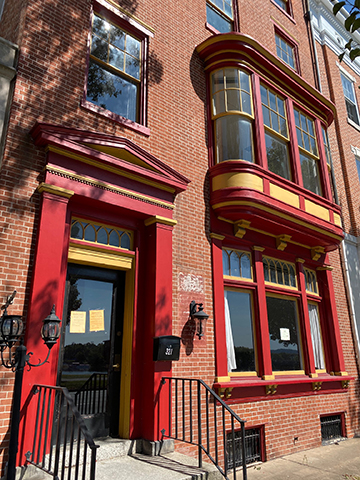
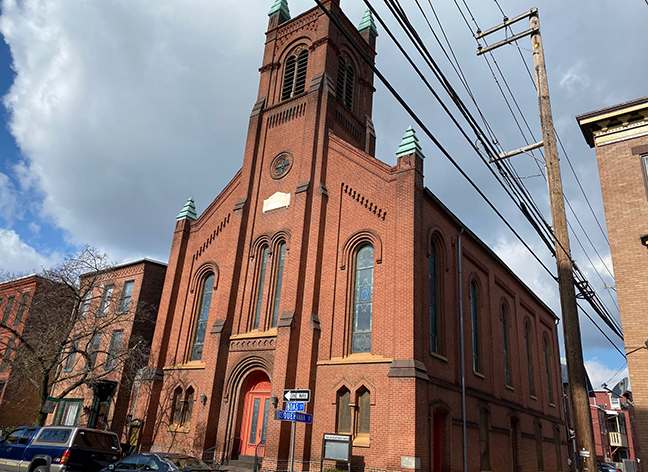













 What if they gave a LERTA and nobody came?
What if they gave a LERTA and nobody came?


 When Brett Comeau moved from Los Angeles to downtown Harrisburg to start a business and close the gap in a long-distance romance, he resisted giving up his wheels to join his girlfriend in her carless existence. Give it a month, she suggested.
When Brett Comeau moved from Los Angeles to downtown Harrisburg to start a business and close the gap in a long-distance romance, he resisted giving up his wheels to join his girlfriend in her carless existence. Give it a month, she suggested. 


